This article was co-authored by Andrea Guice.
Think back to your first day at a new school or that recurring dream of wandering the halls, unable to find the right classroom. You’re excited but a little nervous, trying to make your way in an unfamiliar place. Maybe you catch sight of a mural, or notice a hallway painted in a distinctive color. Suddenly, you have a cue to follow, a landmark that helps you find your way back. That’s the power of wayfinding: subtle signals, sometimes through art, that guide us with confidence.

WHAT WAYFINDING IS — AND WHY IT MATTERS
Wayfinding is an essential element in any built environment, providing clarity, orientation, and guidance. It can be overt, through directional signage, or more subtle, such as a shift in color or an architectural adjustment. In a well-designed project, these elements work together to create spaces that feel intuitive and easy to navigate.
A human-centered approach is especially critical in complex environments like airports, museums, hospitals, and school campuses. For centuries, people relied on landmarks (for example, “turn right at the large tree”) and that same principle still applies today. Most people notice their surroundings before consulting a map or directory, so environmental cues are vital. When combined thoughtfully, these cues form a comprehensive wayfinding system that helps people move with confidence, reducing the chance of feeling lost, anxious, or disoriented.
Signage
Signage is often the first thing that comes to mind when people think about wayfinding. The most effective systems deliver information in small, timely steps, almost like breadcrumbs. At key entry points, signage provides big-picture orientation: a welcome message or a clear “you are here.” Along corridors or near elevators, directional signs guide visitors toward specific destinations. Finally, at the destination itself, signage should confirm arrival, reinforcing a sense of success and clarity.
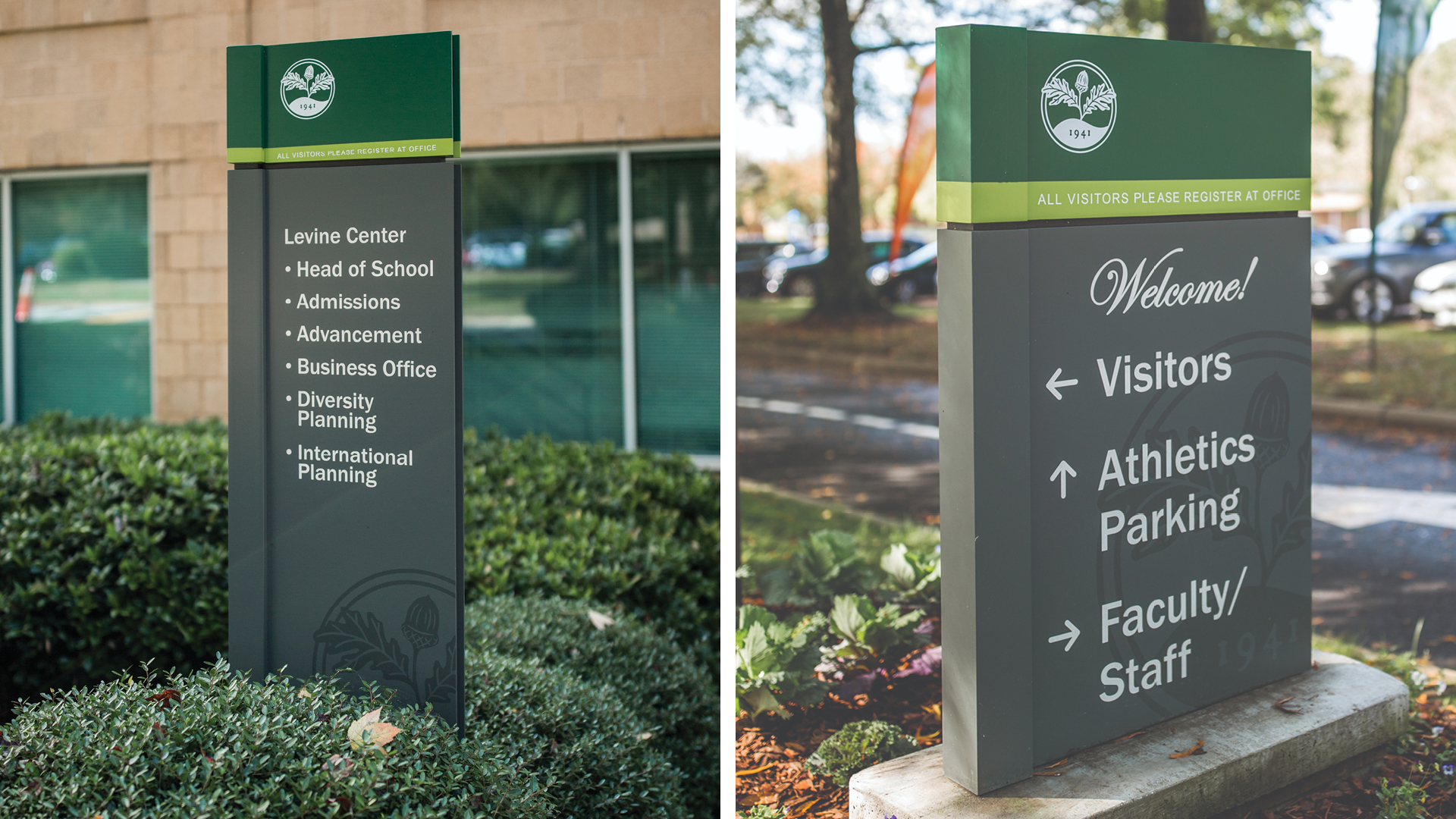
Architectural Cues
Beyond signage, architectural finishes can play a powerful role in directing movement. A change in flooring material or color can subtly lead people toward the correct path—left instead of right. More dramatic changes in color or finish can signal transitions between zones, helping visitors understand that they are entering a new area of the building.
SIGNAGE + ARCHITECTURAL CUES WORK TOGETHER
Signage and architectural cues are most effective when used in tandem, supported by other environmental indicators. Everyone is different, with their own personal needs to navigate so it’s ideal to have multiple cues, with variation. For example, someone who is colorblind may not perceive the color change from one zone to another, so a label is also needed. Together, they create a layered system that communicates on multiple levels, guiding people seamlessly through the space.
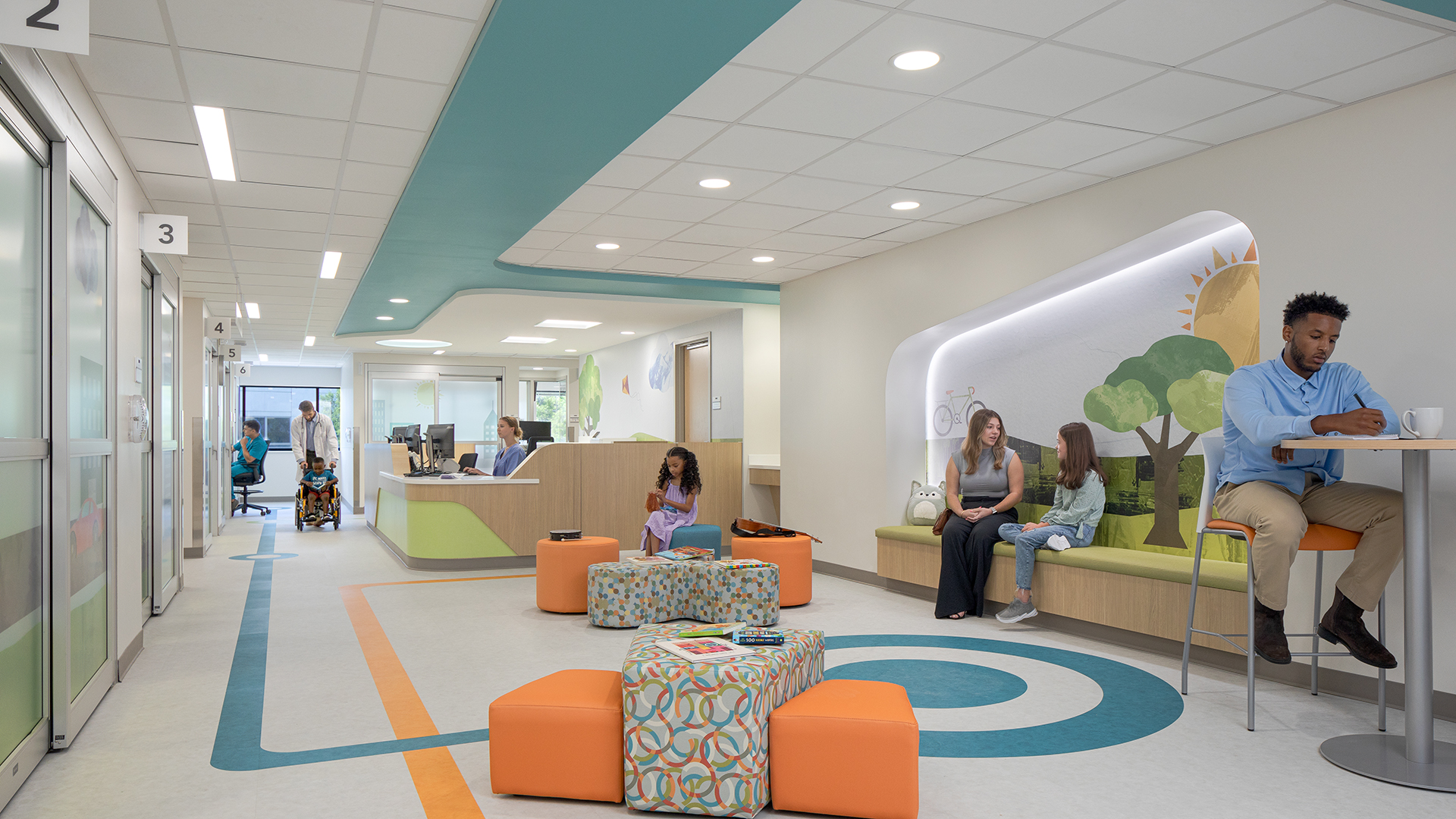
ART AS A NAVIGATIONAL TOOL
Art has the power to soothe stress and promote healing. At the same time, it can orient, anchor, and gently guide people through complex spaces. Humans are naturally drawn to visual cues, and memorable artworks can serve as powerful wayfinding anchors. Whether woven deliberately into a formal wayfinding system or introduced as intentional visual support, art can help people navigate unfamiliar environments with greater ease and confidence.
- Landmarks & Visual Anchors
A vibrant mural at the end of a corridor or a sculptural installation in a lobby gives visitors a clear mental marker: “I turn left at the sculpture.” These iconic elements create anchor points in people’s mental maps, helping them orient themselves without needing to decode complex signage.
The use of art as spatial markers can help reduce the number of signage needed. In studies at SUS Malmö, participants consistently named art as the most eye-catching and memorable features of their surroundings, often using specific works (like a “big red painting”) as reference points when giving directions. - Narrative & Storytelling
Since the first handprints on cave walls, art has been humanity’s language of storytelling — a way to record our lives, express our inner worlds, and share the collective spirit of who we are. Today, that same storytelling power is thoughtfully woven into the design of our built environments, where visual art and imagery can communicate the story of a place and transform what might otherwise be a maze of corridors into a sequence of meaningful, memorable, and even comforting moments of positive distraction.
For example, the wayfinding graphics at Levine Children’s Multi-Specialty Outpatient Center lead patients on an imaginative journey through diverse environments, from outer space to the seashore and everything in between. In the lobby and waiting areas, these graphics are used as immersive distractions, inviting children to play interactive “seek and find” games as they search for hidden animals and objects throughout the space. Each floor features a distinct overarching theme, broken into smaller subthemes that guide patients to specific destinations, such as forest-themed exam rooms on Level 4 or hot air balloon-themed exam rooms on Level 5. Complementary artwork is integrated with wall graphics to reinforce these themes and enhance orientation for patients.
The progression unfolds as follows: - Level 6—Outer Space (currently in design)
- Level 5—Sky
- Level 4—Mountain
- Level 3—City
- Level 2—Sea
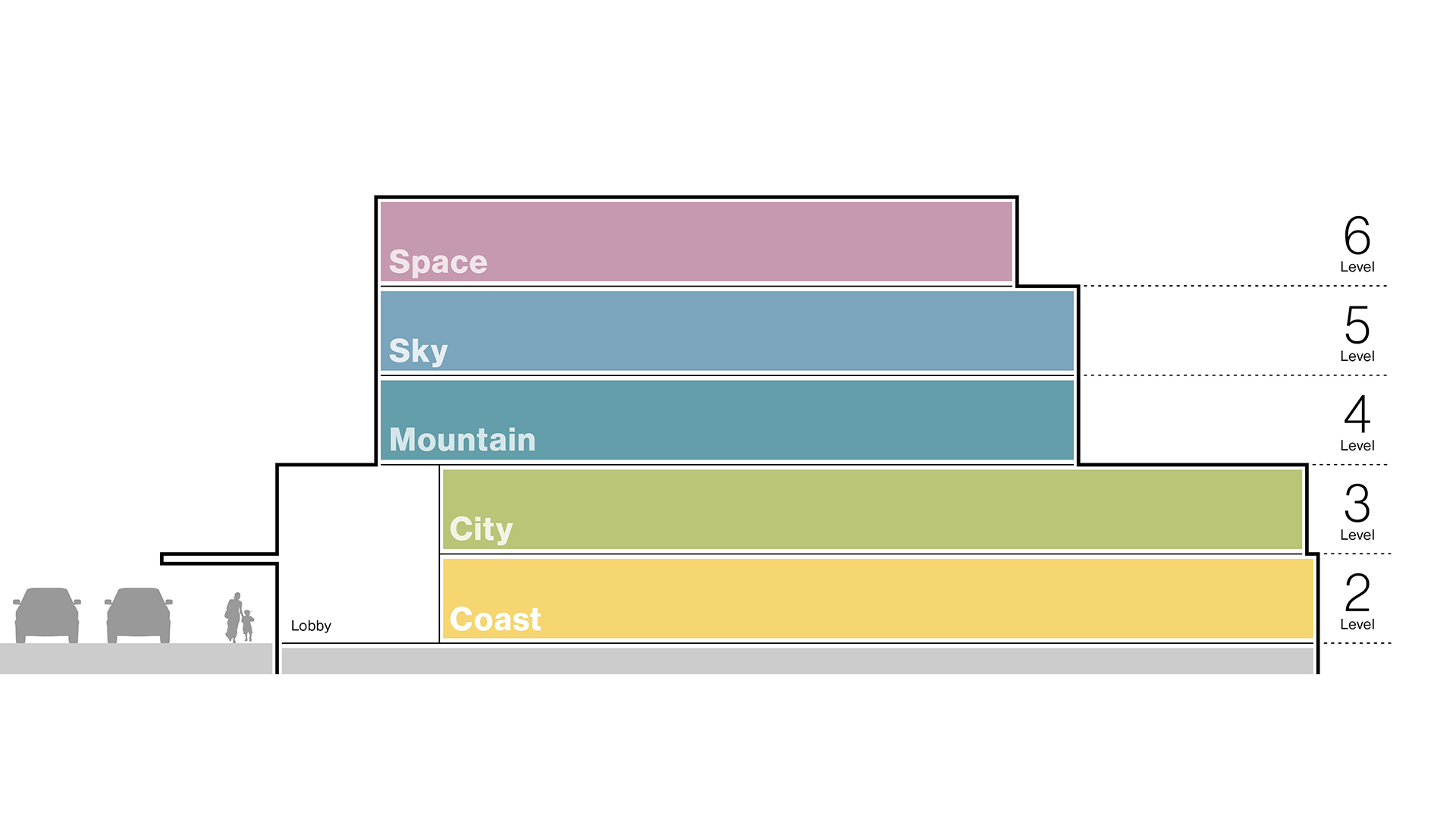
- Color & Patterns
Intentional use of color or artistic patterning can break down large spaces into intuitive, human-scaled zones. Think descriptions like “the blue wing,” “the garden floor,” “the gallery with the red ceiling.” This kind of visual coding reduces cognitive load and helps users subconsciously track where they are and how to get back.
For example, Levine Cancer Institute’s infusion suites draw inspiration from artist Emily Wilson’s Bluebird View, a series of colorful wooden birds, reptiles, fish, and flowers were incorporated as distinctive wayfinding elements. As patients enter the suite, they are greeted by a vibrant wall sculpture that sets a welcoming tone. Individual treatment bays are further personalized with playful icons from Emily’s piece — salamanders, cardinals, hummingbirds, ladybugs, and bumblebees — transforming each space into a recognizable, nature-inspired landmark.
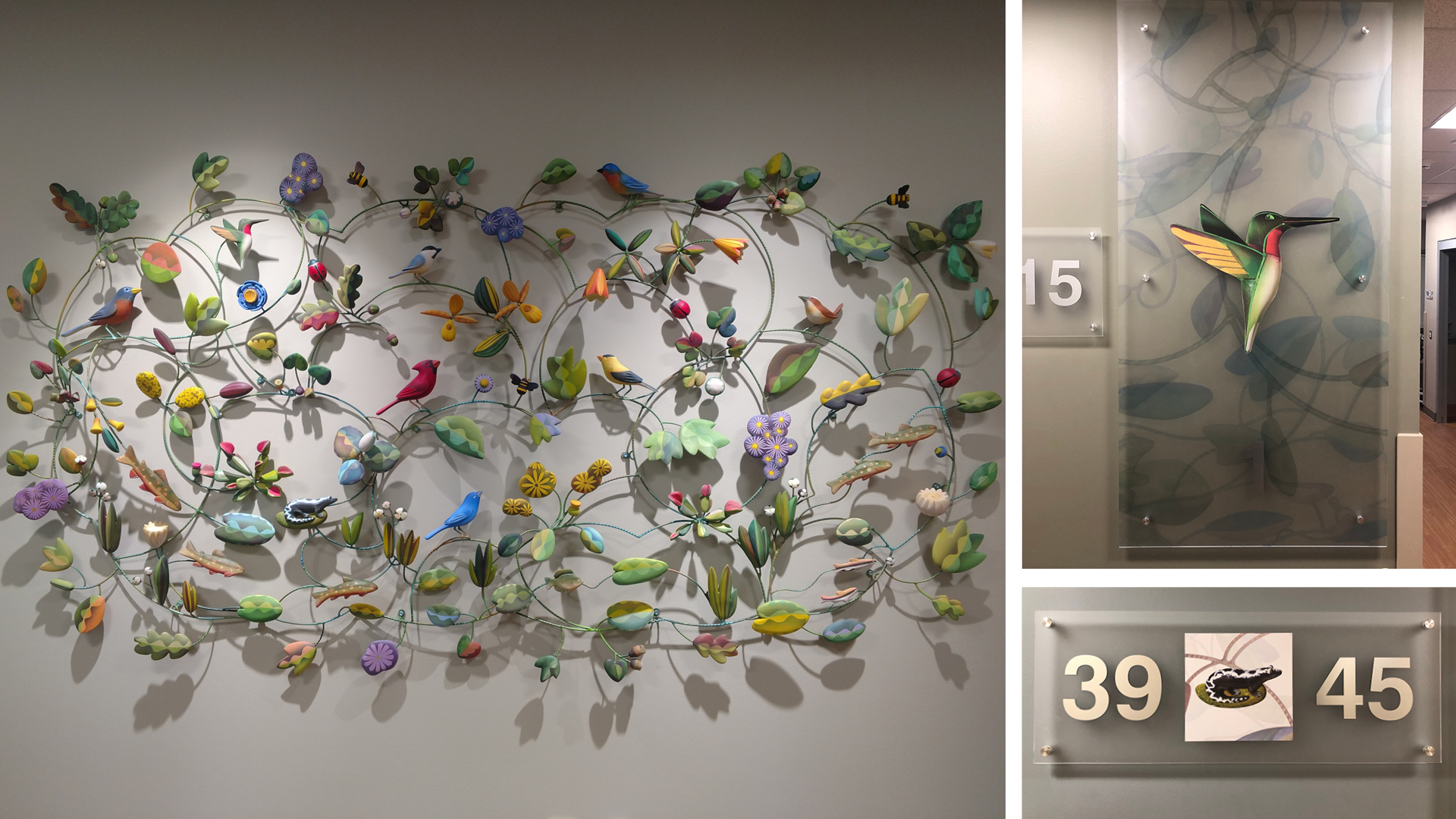
THE HUMAN BENEFITS OF ART & WAYFINDING
Widely acknowledged for its expressive and therapeutic value, artistic integration within built environments supports emotional well-being, reduces stress, and nurtures a sense of connection. By blending art with wayfinding navigation isn’t just improved, it changes how people feel in a space. Entering a complex built environment can be intimidating, and wayfinding is often an emotional experience; losing one’s way can trigger anxiety and stress, even leading to physical symptoms like elevated blood pressure and fatigue. When thoughtfully combined, art and wayfinding provide person-centered benefits that extend beyond navigation itself, supporting emotional well-being, strengthening cognitive recall, and fostering a greater sense of belonging.
- Emotional Well-being
Complex built environments can invoke some of our strongest emotions. Spaces designed with artful wayfinding has been shown to reduce stress and anxiety, especially in places that can feel overwhelming, like airports, city centers, or hospitals. A large mural or a welcoming sculpture can serve as a clear marker within a space, guiding people toward their destination while also offering a moment of calm and reassurance — a visual reminder that says, “I know where I am.”
These artistic anchors do more than signal location; they create points of familiarity in otherwise overwhelming environments, helping people feel grounded, safe, and oriented. By combining functionality with emotional resonance, such works of art transform navigation into a more human, supportive experience.
- Cognitive Support
Wayfinding art strengthens memory. Our brains form deeper spatial associations around emotionally engaging stimuli, which means people are more likely to recall routes marked by distinctive visuals than by numbers or arrows alone. This approach is particularly beneficial for children, older adults, and neurodiverse users. Research also shows that familiarity, whether from prior visits or from resonant artworks, enhances orientation: people who recognize and connect with the art or environment rely less on signage and navigate with greater ease and confidence. - Sense of Belonging
When art reflects the character, culture, or stories of a community, it invites people to feel truly included in a space. Local artworks used as part of wayfinding systems don’t just guide movement, they create pride and a sense of ownership, transforming what might otherwise feel like anonymous, institutional corridors into places that resonate with identity and meaning. By weaving familiar imagery, symbols, or narratives into the built environment, art fosters connection and belonging, helping people feel not just oriented, but at home.
THE FUTURE OF ART & WAYFINDING
Wayfinding has always been about clarity and orientation, helping people move through complex spaces with confidence. But as technology, design, and culture evolve, so does the role of wayfinding. Increasingly, art is becoming a central part of this evolution—transforming wayfinding from a functional tool into a memorable, human-centered experience. Digital experiences take a focus when we look these opportunities.
- Personalized Wayfinding
Airports are already customizing digital signage using traveler’s app locations. If we take that further and merge immersive art environments with wayfinding, a digital path could be programmed to guide each user. More subtly, environments may respond dynamically to individuals, with art and light shifting to highlight personalized routes. Instead of a static sign, a color change or digital display could guide each person along their specific path, creating a tailored, seamless experience. - Augmented Reality Layers
As AR technology becomes more accessible, digital art may overlay physical spaces to enhance navigation. Visitors might follow illustrated arrows styled to reflect the identity of the space or interact with animated icons that appear in real time. This fusion of art and tech creates wayfinding that is both functional and engaging. - Cultural Storytelling
Wayfinding is an opportunity to connect people with the culture and character of a space. Public art and architectural cues can tell a story, whether it’s about local history, community identity, or an organization’s values. Moving through a hospital, school, or museum could feel like uncovering a narrative, with each step marked by artistic cues that resonate beyond direction alone.
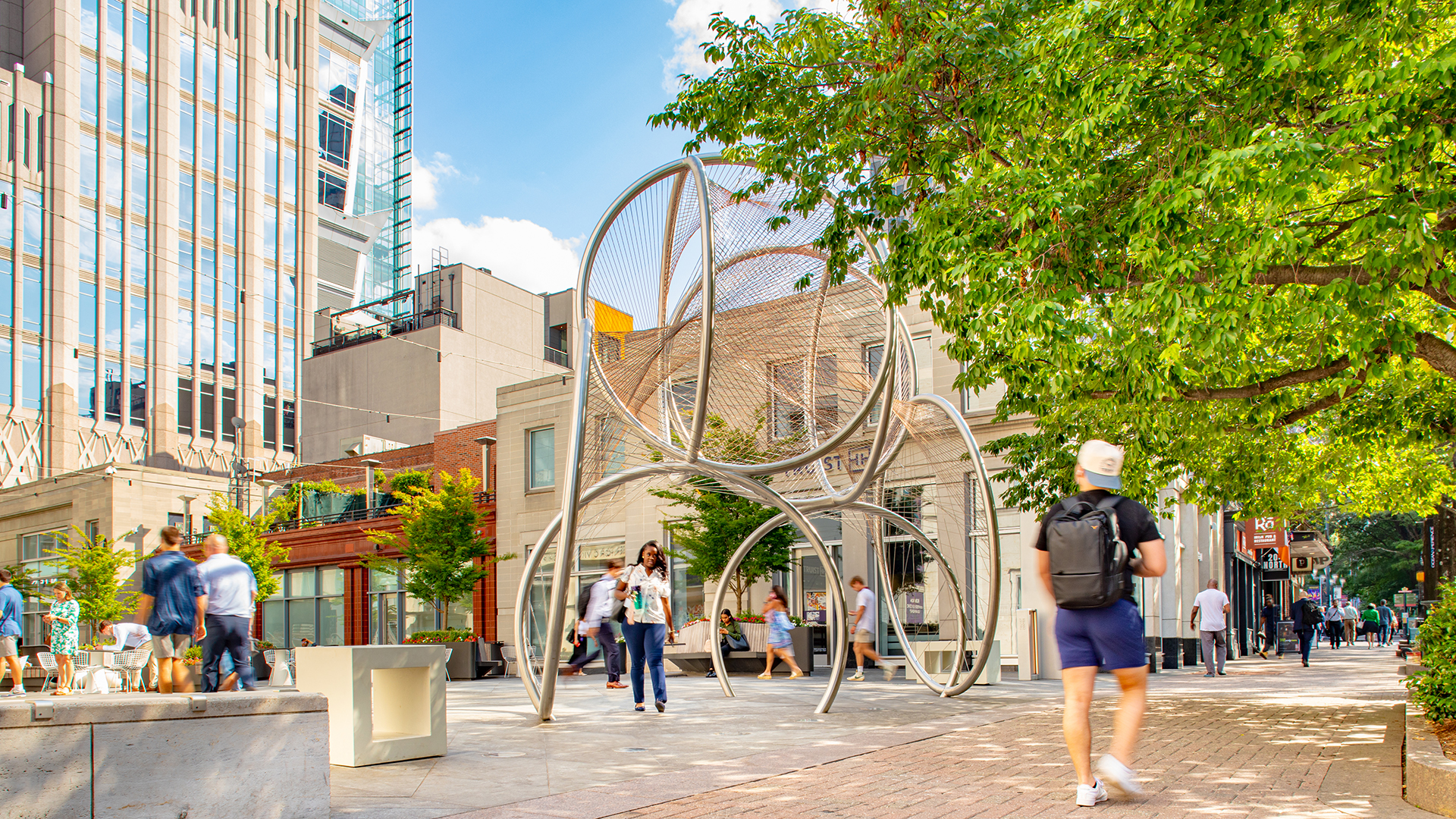
EVERYDAY ART AS BEAUTY AND GUIDANCE
At its core, wayfinding is more than getting from one place to another. It’s about feeling grounded and connected along the way. When art is woven into these systems, it helps us orient ourselves and feel at home in a space. A mural isn’t just decoration. A pattern isn’t just texture. These everyday details quietly guide us, turning unfamiliar places into something welcoming and familiar. When we start to see art not only as beauty but as a way to navigate the world, the spaces around us begin to feel a little more human.
